Hugo von Blomberg
KPM (Köngliche Porzelolan Manufakur, Berlin)
Freia and Her Chariot Drawn by Cats
[HOME]
[POPULAR RETELLINGS]
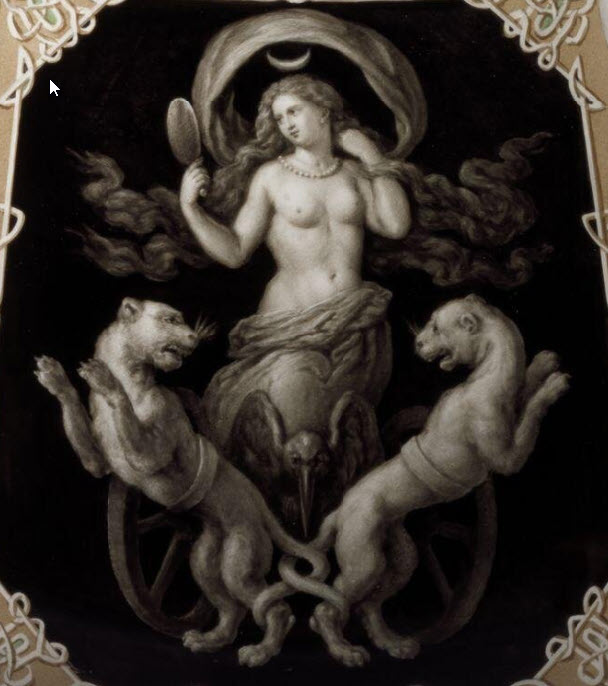 |
||
|
The Goddess Freia drawn in a chariot by
two wild cats. A product of the Royal Porcelain Manufactory in Berlin (German: Königliche Porzellan-Manufaktur Berlin, KPM) |
||
|
August Gotthold Dietrich Hugo, Baron von Blomberg, was a poet
and painter, born at Berlin Sept 26, 1820. He studied under Karl
Wilhelm Wach in the Academy at Berlin, and under Léon
Cogniet at Paris, where he copied Rubens's works in the Louvre.
He died at Weimar, Thuringia on July 17, 1871. Shown at the International Exhibition in Paris, 1867, in a section which celebrated the Norse legends, this example and a set of five vases with subjects based on the "Nibelungen" legend were singled out for attention by the British critics. The Illustrated London News, Volume 51, 1867, p. 303: "What we say about the porcelain of Saxony applies also to that of the Royal manufactory of Berlin, though this is in advance of the other. In the large vases of Berlin porcelian a great difficulty has been avoided by producing them in biscuit. The forms do not fail in elegance, and we illustrate this by giving one of these biscuit vases, on which is represented a group of Venus, Vulcan and Paris. There is a series of five vases in the form of jars, also in biscuit, with subjects painted in brown upon a grey-coloured ground, representing scenes from the German epic of the Nibelungen. These vases are painted after designs by Professor Kolbe, brother of the late manager; we say late manager, for Councillor Kolbe of the Royal manufactory, died May 27th last. We give some idea of these singular productions of the vases of Theodise style, where Professor Hugo von Blomberg of Berlin has represented the goddess Freia in a chariot drawn by two wild cats. This series of vases proves the late lamented manager sought a style of decoration which has a German character, and that in this he was sucessful." The Art Journal of the Paris Universal Exhibition, Volume 15, 1868, p. 302: "Prussia, to which we may now add Saxony, for the fortunes of war have recently united these two formerly independent kingdomes into one, —and they were associated together in the Exhibition— next demands notice. With the exception of works from the two Royal Manufactories of Berlin and Dresden, the contributions from these countries, so far as relates to high-class porcelain, were few, and only in two or three instances, valuable from an artistic point of view. Yet from neither country, nor from Austria, do we perceive indications of advance in the ceramic arts. From the Royal Manufactory of Berlin were numerous examples of painted vases (see p. 28). Especially worth noting was a series of five, in the form of jars, decorated with scenes from the 'Nibelungen,' painted in bistre upon a light greyish ground. The designs for these pictures were supplied by Professor Kolbe, brother of the late manager of the Berlin works. On another vase Professor H. Blomberg has represented the goddess Freia drawn in a chariot by two wild cats; and another, which is divided into two sections or bodies, shows a series of eight figures, modelled in high relief, encircling the upper body. These figures represent the eight old provinces of Prussia." |
||
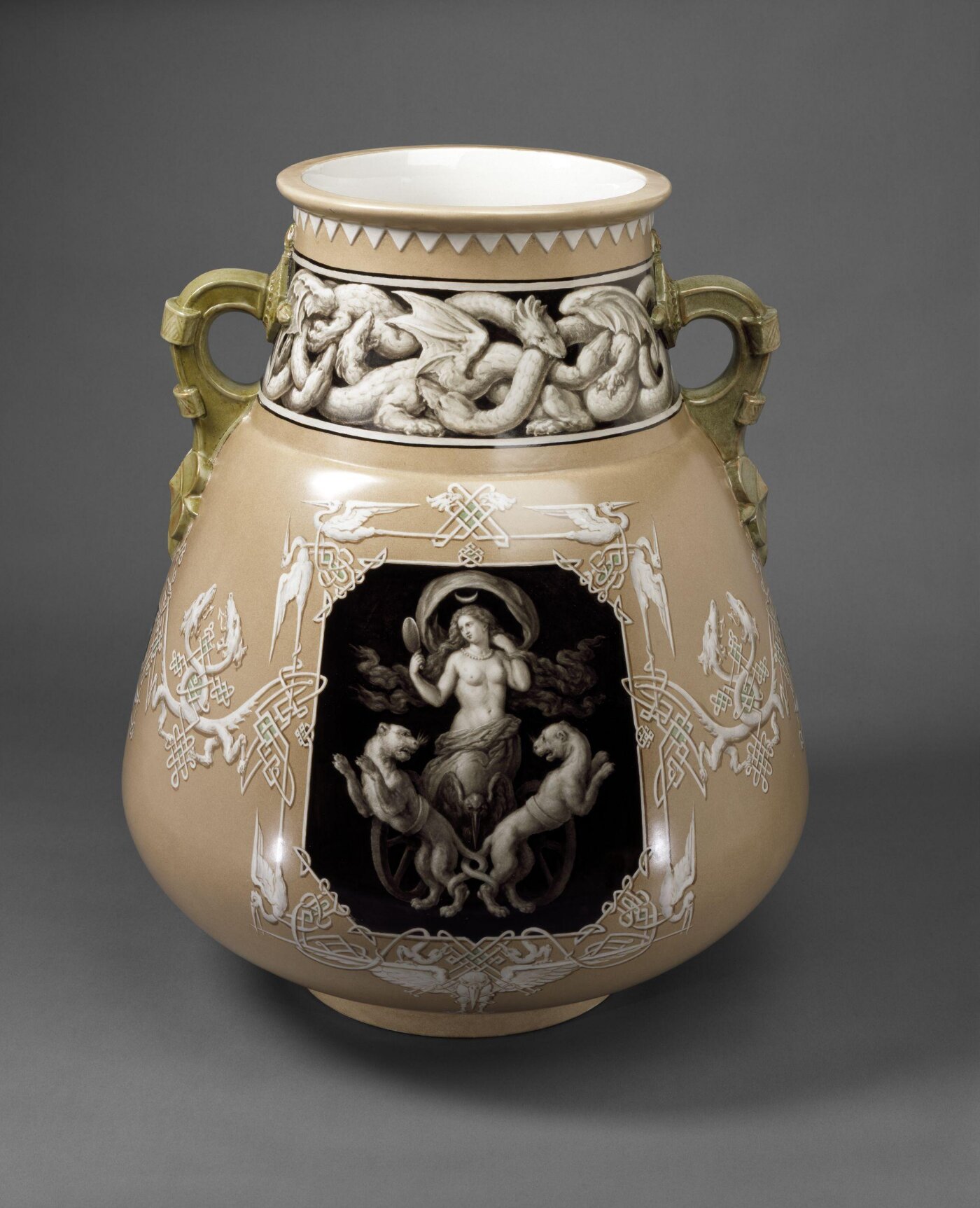 |
||
|
Vase, porcelain, painted in grisaille,
made by the Royal Porcelain Manufactory in Berlin, designed by Hugo von Blomberg, 1867 Source |
||
| The Art Journal of the Paris Universal Exhibition, Volume 15, 1868, p. 28: | ||
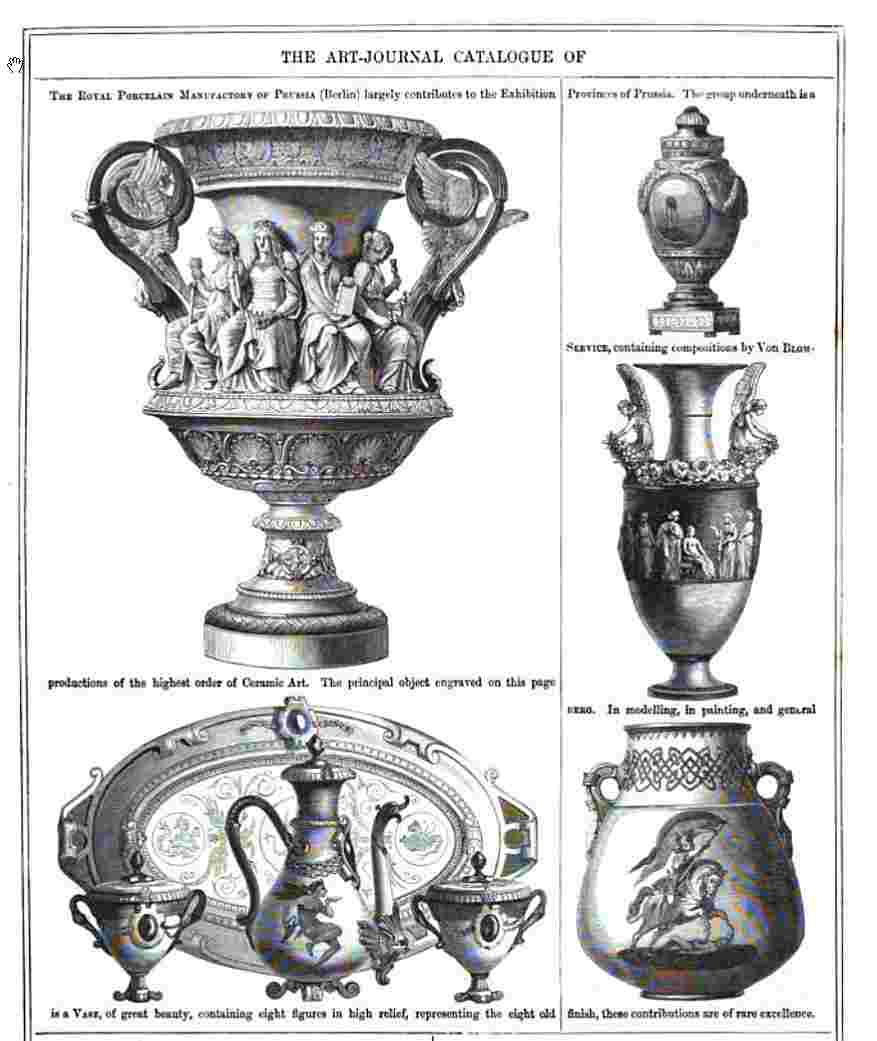 |
||
|
Illustrirter Katalog der Pariser Industrie-Ausstellung von 1867, p. 25: |
||
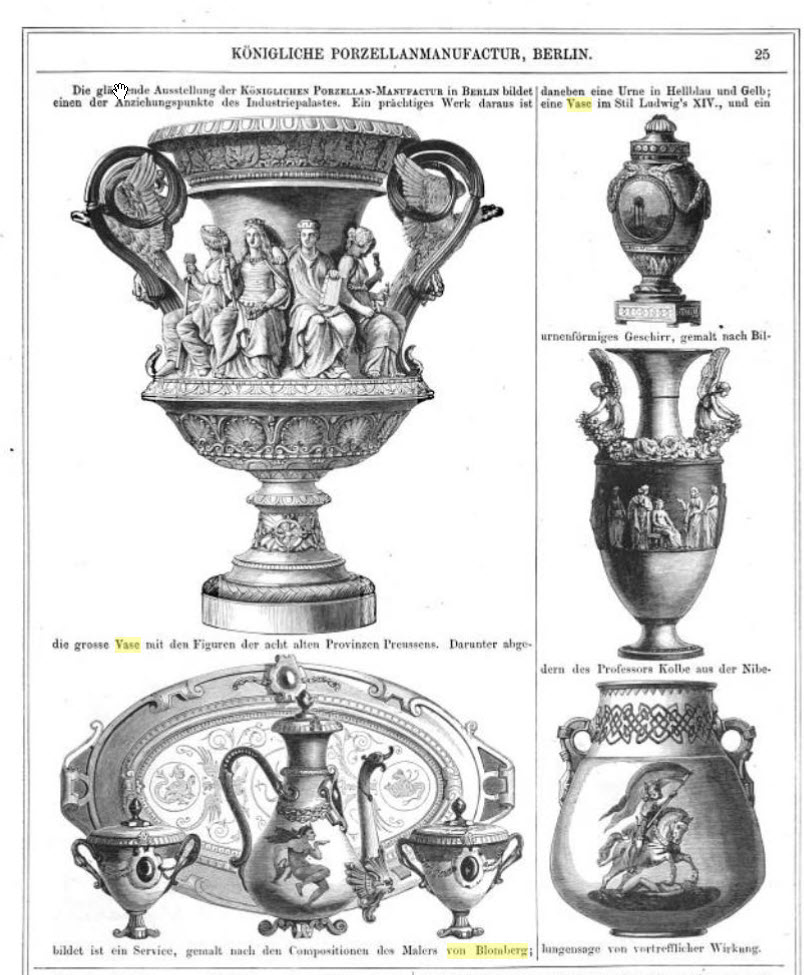 |
||
|
Temple in the Moonlight by Hugo von Blomberg |
||
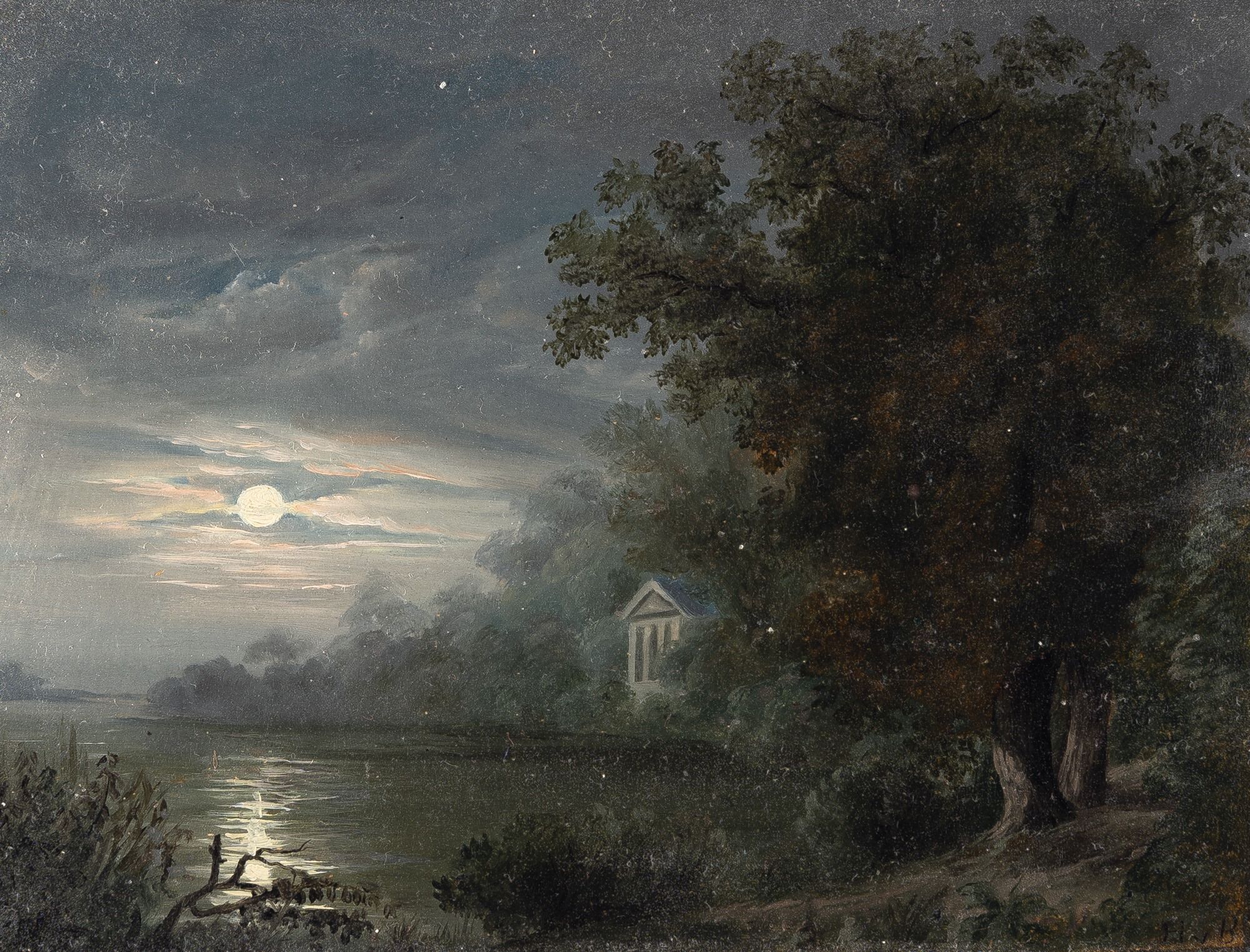 |
||
[HOME][POPULAR RETELLINGS]